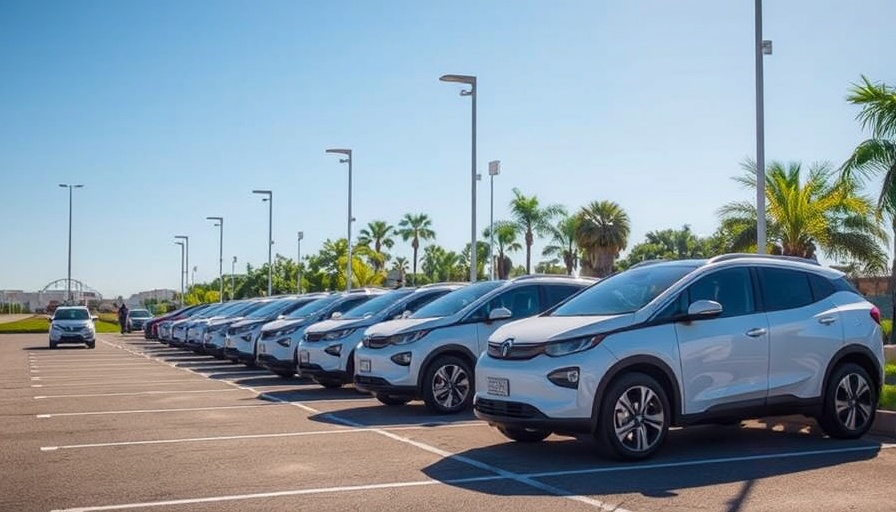
A Steady Climb: Australian EV Sales Maintain 15% Market Share
In September 2025, the electric vehicle (EV) market in Australia demonstrated resilience, standing firm at a combined market share of 15.7%. This includes over 11,500 battery electric vehicles (BEVs) and nearly 4,500 plug-in hybrids (PHEVs) sold, amidst an overall new car market totaling around 102,000 units. Notably, the total year-to-date market share for BEVs has reached over 8%, while PHEVs account for over 4%, translating to a notable presence of 12% of plug-equipped vehicles in the market.
The Rise of Chinese Manufacturers and Local Heroes
China's automotive industry continues to solidify its foothold in the Australian market, controlling nearly 80% of BEV sales. Companies like BYD and MG have made a significant impact, with BYD’s Sealion 7 even emerging as a top seller. ranking eighth in overall sales, while the Model Y from Tesla reclaims its position as a market favorite.
With BYD ranking sixth in total sales over the past two months, this marks a significant achievement for the Chinese giant, whose SUVs and PHEVs are capturing considerable market interest. In contrast, the domestic landscape sees new entrants like Geely's Radar BEV ute promising to amplify the electrification of utility vehicles – a niche that holds considerable potential in the pickup-heavy Australian market.
The Imperative of Infrastructure Development
Despite a commendable growth trajectory, the call for enhanced charging infrastructure remains paramount. Tony Weber, chief executive of the Federal Chamber of Automotive Industries, asserts that while subsidies aren't the solution, better infrastructure will drive further adoption of electric vehicles. The ongoing transformation implies that more individuals will become comfortable recharging away from home, slowly quelling concerns around 'range anxiety.'
The Competitive Edge: Pricing Wars Transforming the Market
As competition heats up between carriers, pricing strategies are changing dramatically. Hyundai, for instance, previously reluctant to engage in a price war with Chinese competitors, has started implementing significant reductions on electric models, proving consumers will benefit from greater affordability as market dynamics shift. Consequently, as sales rise, manufacturers adapt pricing strategies to capitalize on the growing demand.
Emerging Models Boost Consumer Interest
Among the anticipated electric vehicles that could further stimulate market interest is the BYD Seagull, targeted at buyers preferring miniature, budget-friendly options. Anticipated to launch in New Zealand before arriving in Australia, this vehicle could just be the catalyst to attract younger demographics or budget-conscious consumers interested in sustainability.
This Isn’t Just About Cars: Broader Implications for Australian Emissions Goals
As the Australian government ponders an ambitious target of 50% of new light vehicle sales being electric by the year 2030, there’s recognition that simply increasing the number of electric vehicles isn’t enough. To meet emissions reduction targets, infrastructure must evolve alongside broader transitions in public transit and freight systems. Advocates argue that a multi-pronged approach combining EV adoption with enhanced public transport options is necessary.
Looking Ahead: Is the Electric Vehicle Transition Inevitable?
While the 15% market share is an encouraging sign, experts anticipate a transformative momentum once that number breaches the 20% threshold—a point where mass adoption will likely become self-sustaining. As infrastructure catches up and public interest grows, the potential for electric vehicle penetration into everyday life seems not just feasible but likely.
With significant developments looming on the horizon, the electric vehicle revolution in Australia is not just number-driven; it is a culmination of consumer choices, technological advancements, and policy support aimed at reorienting transport towards a more sustainable future. For more detailed insights on various electric vehicles, including pricing and features, consider browsing our latest product reviews.
 Add Row
Add Row  Add
Add 




Write A Comment